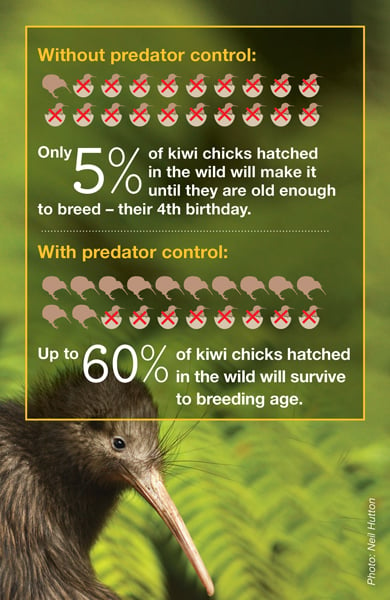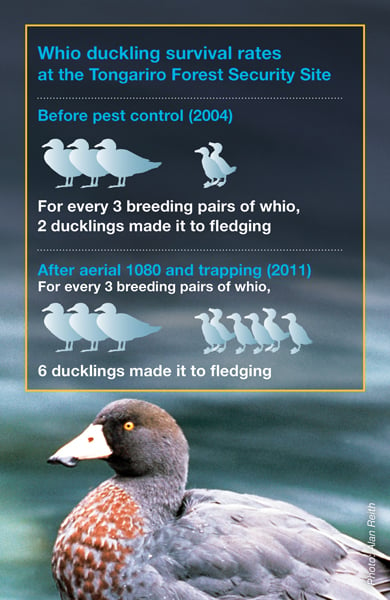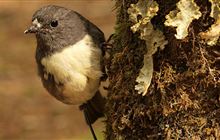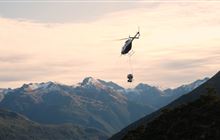Proof 1080 is protecting native species
Introduction
When introduced predators are controlled, native species have a better chance of survival, their food source is more abundant, and the forest is healthier.Monitoring native species and introduced predators
We are successfully using traps and toxins like 1080 to reduce the threat of introduced predators at conservation sites around New Zealand.
Experts monitor and analyse the results from operations using:
- cameras
- acoustic recorders
- tracking tunnels
- chew tags
- human observation methods.
These results tell us:
- where and when predators need to be controlled to get the best outcomes for threatened native wildlife
- how effective an operation was at reducing predator numbers
- how native species responded.
Achieving results for native species
Many populations of native birds, bats, frogs, reptiles, insects and plants are now stable or recovering. This is thanks to combined efforts with hapū, iwi, other environmental agencies and community groups.
However, some populations continue to decline due to intense pressure from predators. In areas with no predator control, native species, including more common birds, are declining at greater rates. In some cases, they're becoming locally extinct.
Learn more about the progress of some of our most threatened native species at National Predator Control Programme Monitoring results.
Examples of success
Watch our video below about how native bird numbers in Landsborough Valley have doubled.
1080 operations have protected our own native legend the kiwi and the blue duck/whio.

North Island brown kiwi chick survival rates are 12 times higher with predator control
Photo: Neil Hutton

Three times more whio survived to fledge after aerial 1080 and trapping
Photo: Alan Reith
Other success stories
- Check out blogs, podcasts and video stories about Predator Free 2050.
- Watch the Fiordland Kiwi Diaries exclusive mini-series and learn about the work we are doing to save the Fiordland tokoeka.
- Watch footage of wildlife before and after 1080 is used in the Blue Mountains, West Otago. Cameras capture mohua and other surprises


